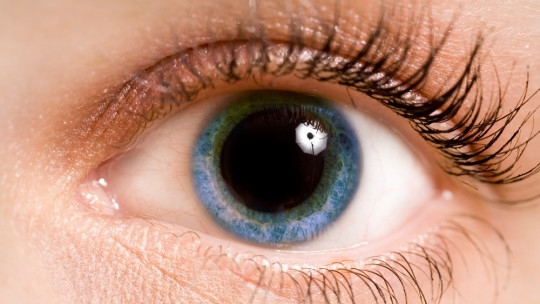Psychological disorders such as schizophrenia and mania or the use of hallucinogenic drugs and noradrenergic agonists can cause hypervigilia, that is, the pathological increase in the level of consciousness, which causes a subjective sensation of lucidity but also distractibility.
In this article we will describe What is hypervigilance and what are its main causes?
What is hypervigilance?
We can define hypervigilance as a phenomenon that consists of increased level of alertness, attention and awareness Although the concept is usually associated with psychopathology, particularly the spectrum of psychosis and the manic episodes typical of bipolar disorder, hypervigilance can also occur in people without alterations of this type.
However, in general the term is used to talk about psychopathological events. In this sense, hypervigilia has been described above all as a prodrome of the development of certain psychological disorders, related both to conscious mental activity and to the temporary or permanent alteration of its biological basis: the central nervous system.
From a conceptual point of view, hypervigilance falls within the category of disorders of consciousness. More specifically, it is the most representative phenomenon of positive (or broadening) alterations of consciousness On the other hand, a decreased level of alertness is part of the deficit disorders of consciousness.
People who experience hypervigilance often report a subjective sensation of increased clarity of consciousness accompanied by an increase in the number of movements , including those that are necessary for spoken language; In relation to this last point, hypervigilia is associated with tachypsychia (acceleration of mental activity).
However, studies reveal that the increase in the level of consciousness does not imply an improvement in attention tasks: experiences of hypervigilance normally occur simultaneously with a state of distractibility, through which subjects have greater ease in changing the focus of attention in response to stimuli that are not necessarily relevant.
Causes of this disorder of consciousness
There are two main sets of causes that can cause hypervigilance. The first of them includes two groups of psychological disorders with a clear biological basis: psychotic disorders and manic episodes.
The other major cause of hypervigilance is the consumption of psychoactive substances such as cocaine, amphetamine and hallucinogens.
1. Schizophrenia and other psychoses
According to the DSM diagnostic manuals, psychotic disorders are characterized by the presence of hallucinations (which are usually auditory in functional alterations), rigid delusions, disorganization of language (manifested, for example, in the flight of ideas) and behavior, as well as as well as negative symptoms such as emotional flattening.
Psychotic breaks are episodes in which there is a break in contact with reality, usually due to intense stress and/or substance use , especially if they have hallucinogenic effects to some degree (which includes cannabis). Sometimes hypervigilance occurs in the context of an outbreak, which may or may not precede a diagnosis of schizophrenia.
2. Manic episodes
Mania is defined as a pathological increase in energy levels, alertness and brain activation , as well as the state of mind. When repeated manic episodes occur in the same person, the diagnosis of bipolar disorder is used; For this, the appearance of mania is more key than that of depression, which is also characteristic.
Hyperwakefulness is one of the most obvious signs of manic episodes. In these cases, it is very common for the person to show hyperactive and unreflective behavior, an increase in the pace of thought and speech, distractibility when faced with the appearance of irrelevant external stimuli, or a reduction in the subjective need to sleep.
3. Hallucinogenic substances
Hallucinogens, psychedelics or psychotomimetics They are a group of psychoactive substances that cause significant alterations in perception, cognition and emotion. Their name is misleading, since they rarely cause true hallucinations; For example, many hallucinogens cause increased or distorted visual sensitivity.
The most characteristic substance of this group is lysergic acid or LSD , which was very popular in the mid-20th century. The mechanism of action of this drug is related to its ability to interact with dopamine, adrenaline and serotonin receptors, and its consumption generally generates a feeling of euphoria and increased self-awareness.
Other well-known hallucinogens are mescaline (obtained from the peyote cactus), ayahuasca (associated with experiences of personal transcendence), psilocybin (commonly known by the name “hallucinogenic mushrooms”), and ecstasy or MDMA, a synthetic drug that It remains popular today in nightlife settings.
4. Norepinephrine agonists
Norepinephrine is one of the most important neurotransmitters in the human central nervous system, in addition to acting as a hormone in the endocrine system. Its functions are related to brain excitation (or activation); Among these we find the maintenance of the state of wakefulness, the management of the focus of attention or the fight and flight responses.
The two main psychoactive substances with agonist effects on noradrenaline are cocaine and amphetamine. Cocaine blocks norepinephrine reuptake , as well as dopamine, serotonin and adrenaline, by the presynaptic terminals; Amphetamine has similar effects but also enhances the release of dopamine.
On the other hand, there are also several medications that have been approved for use and that, since they enhance noradrenergic activity, could cause hypervigility if consumed in excessive doses. Antidepressants such as MAOIs, tricyclics or reboxetine (the major selective norepinephrine reuptake inhibitor) are good examples of this.









